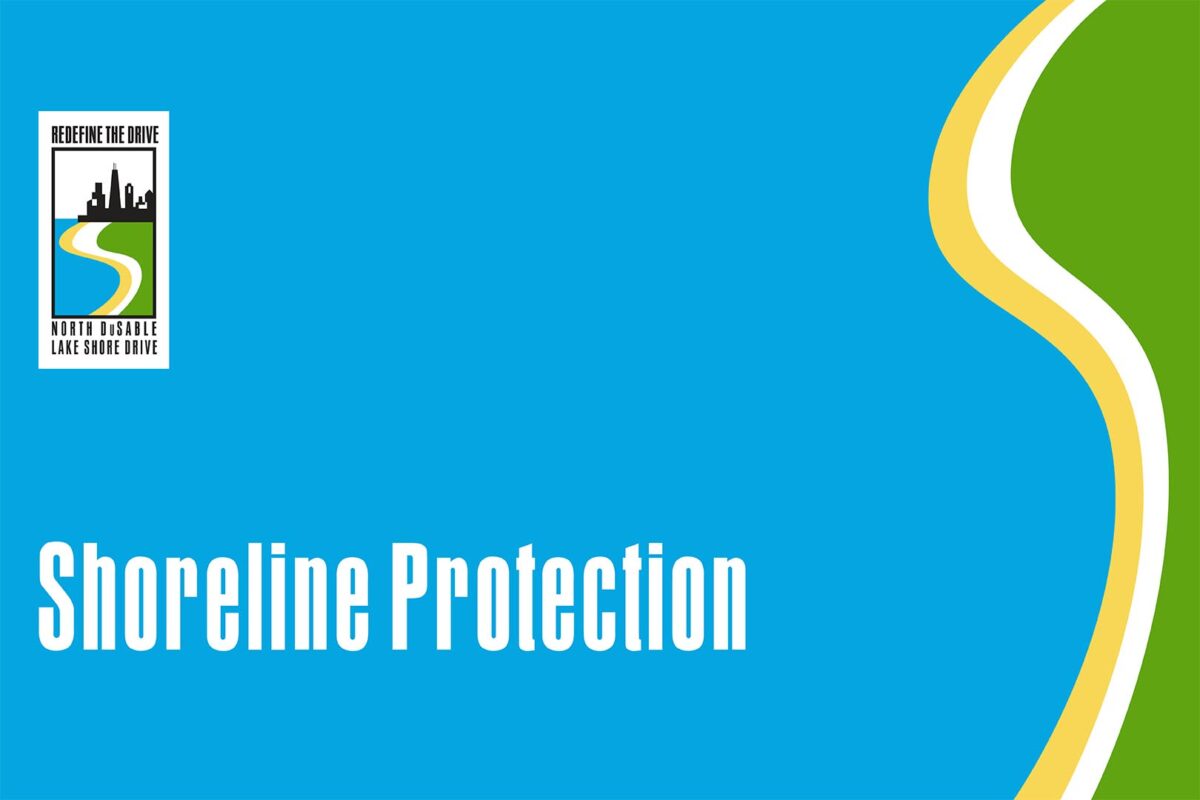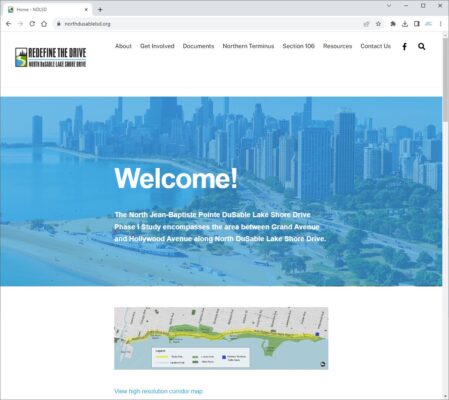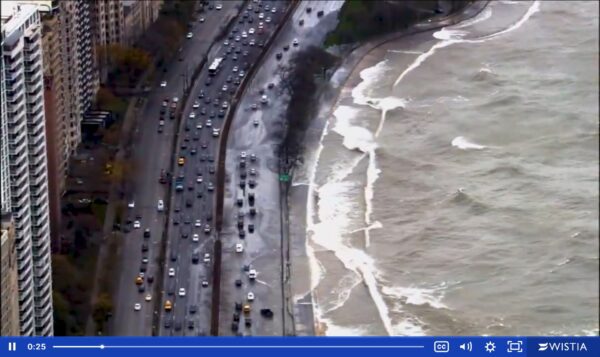
The North DuSable Lake Shore Drive Phase I Study website features many exciting resources presenting information on the project. The study’s project team often receives questions about current and future lake water levels and how designs are taking climate resiliency into consideration. A major component of the project is to provide improved shoreline protection measures that address resiliency issues.
With the extensive amount of information being shared at the many public meetings and on the website, the project team wanted to find a way to get information on the shoreline study component out to the public without adding to the already extensive meeting times. They determined that a video would be an effective tool to share the complex process of analyzing current and future shoreline erosion issues and of designing to address those issues. A 3-minute video was produced to share the development and testing potential of shoreline protection measures.
As the lead Engineering consultant on the Study, the Civiltech team led the creation and production of the video. The team worked with Baird and Associates, an engineering firm specializing in shoreline reconstruction and the consultant studying the Lake Michigan shoreline along the NDLSD project limits. Baird is providing the testing and data collection, which included a scale model of a key section of the lakefront. This model was built in a wave tank and was used to collect physical data on climate impacts on the shoreline.
Civiltech’s involvement with the video production began with Lissa Sweeney, AICP, LEED AP. Lissa is a Project Manager on Civiltech’s Transportation Planning team and has had a significant role in the Public Involvement campaigns for the NDLSD project. Lissa recognized that the shoreline protection component of the design was an interesting topic that not many people were aware of. She has also been involved in creating the large quantity of materials to explain all of the facets of the project to the public, both in public meetings and for the project website. Therefore, she helped facilitate the idea that a video would be an effective and interesting way to share this information.
Since Lissa has been responsible for much of the public facing materials, the video project ultimately became hers to run with. She worked with Baird to gather the information to be included in the video. Baird had provided presentations to the internal project team, and those presentations provided a significant amount of the data collection process, including video clips. Lissa used that information to outline and script for the video and to write an associated Study Spotlight which is also featured on the website.
Lissa pulled in Civiltech’s Creative Director, Keith Nowakowski, to help bring the script to life. Keith began by reviewing materials provided by Baird, which included the interesting video footage of the wave pool testing, a key element of the story. Keith also worked with Lissa and found period photos and news footage of NDLSD in different weather conditions.
Keith brought background in video production to the project, but said that the project gave him the opportunity to expand his experience and learn some extensive video editing. Keith was also responsible for selecting and applying the video’s background music.
The original intent was for the video to be just graphics and on-screen copy. But with the specialized and extensive data being presented, the team pivoted and determined that a narrator was needed. And as Keith says, “the audio studio in the closet was born!”
Keith set up a recording studio in a Civiltech supply closet. Besides the logistics of obtaining the necessary equipment and creating appropriate acoustics, a primary challenge was controlling the outside noises of a functioning office. Keith took a queue from the roadway engineers and set up detour signs encouraging staff to avoid the adjacent hallway while recording was taking place. Keith referred to it as his “Maintenance of Traffic Plan.”
Of course to add narration, the team needed a narrator. Civiltech’s Director of Environmental and Design Studies, Jen Hyman, P.E., was tapped for this role. Jen brought a strong understanding of the project including the shoreline studies component. Jen had previously joined Baird’s Rory Agnew in presenting the NDLSD project as part of the Friends of the Parks lecture series on Nature Based Solutions to Lakeshore Erosion.
In addition to her knowledge of the project, Jen brought her outstanding communication skills and previous video narration experience to the project. Jen had helped script and had narrated a video that Civiltech together with the C*NECT team had prepared for the Chicago Department of Transportation on the Jackson Park Transportation Improvements project. The goal of that video project to ensure that, while explaining the design and engineering of the project, it would also capture the vision and aspiration of the Obama Foundation in the planning of the Obama Presidential Center project.
The Civiltech team was thrilled to support our client, the Chicago Department of Transportation in the creation and production of this video. We look forward to applying the skills and lessons learned through this effort to forthcoming video production. (Perhaps one day, we will add an Oscar to our list of awards.)
You can view the shoreline video on the NDLSD website:
https://www.ndlsd.org
You can read more about the Jackson Park Transportation Improvements Project video here:
https://civiltechinc.com/jackson-park-transportation-improvements-project/
